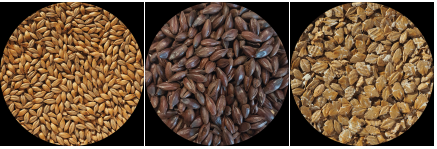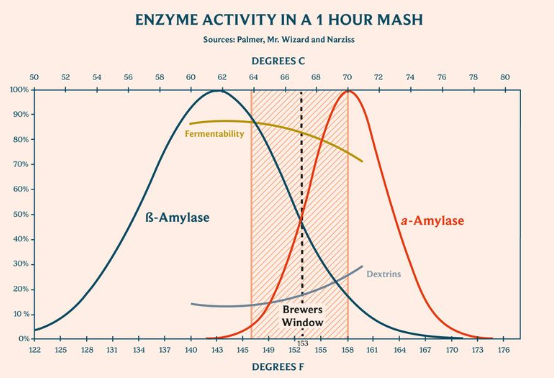The Four Key Factors of MashingUpdated 7 months ago
The Four Key Factors of Mashing
Grain Type
Base Malts: Make up most of the grist; full of enzymes and give high sugar yield.
Specialty Malts: Add color and flavor; darker malts have fewer enzymes.
Flaked Grains: Boost body and head retention but need base malt to convert starch.

Base malt , Specialty malt Flaked malt
2. Temperature
Enzyme Activity:
Beta-amylase (140–149 °F / 60–65 °C): Makes simple, fermentable sugars → drier, higher‐ABV beer.
Alpha-amylase (155–160 °F / 68–71 °C): Makes unfermentable dextrins → fuller body, more mouthfeel.
Common Mash Temp: Around 152 °F / 67 °C for a balanced mix of both enzymes.
 Amylase enzyme activity
Amylase enzyme activity
3. Time
Typical Range: 60–90 minutes.
Shorter Mash: If your grain bill is mostly base malt (high enzyme power).
Longer or Step Mash: If you use many specialty grains or want more precise control.
4. Acidity (pH)
Ideal Range: pH 5.2–5.4.
Why:
Beta-amylase works best at pH 5.1–5.3.
Alpha-amylase works best at pH 5.3–5.7.
Tip: Adjust with food-grade acids or brewing salts if needed.